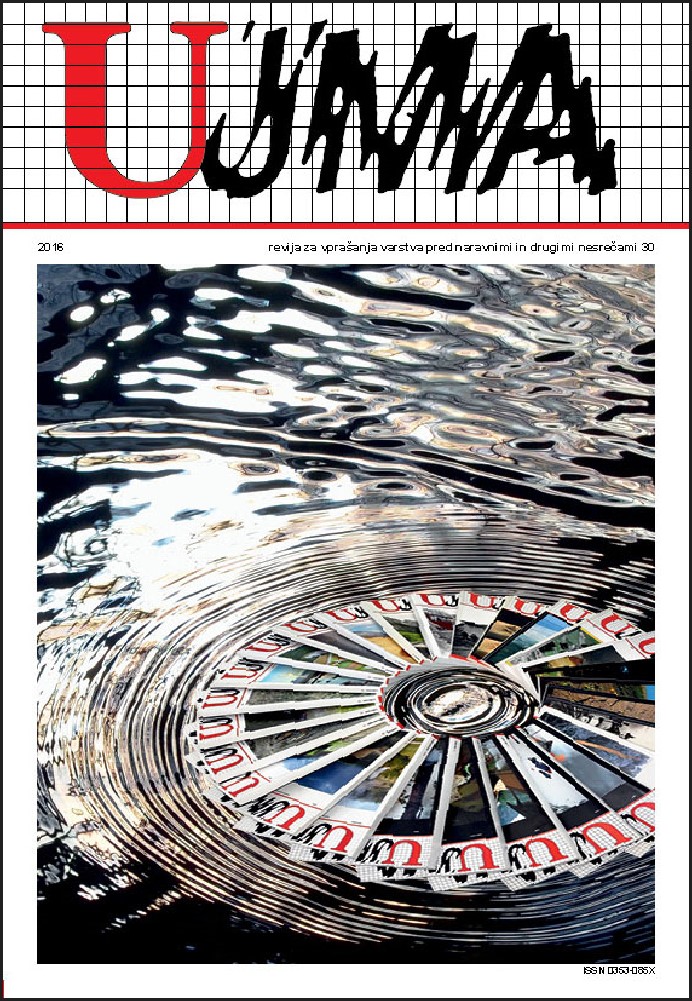SLOVENIA AND THE 3RD UNITED NATIONS WORLD CONFERENCE ON DISASTER RISK REDUCTION, SENDAI, JAPAN, 2015
Abstract
Slovenia was actively involved in the work of the 3rd United Nations World Conference on Disaster Risk Reduction (14-18 March 2015, Sendai, Japan). It is the turning event in the field of disaster risk reduction in the world. The article provides short comments on the work at the world conference and loudly debates the situation in Slovenia in the field of disaster risk reduction.
References
ABC, 2015. Tropical Cyclone Pam: Why the Vanuatu death toll was so low. http://www.abc.net.au/news/2015-04-01/explainer3a-why-was-the-vanuatu-death-toll-from-cyclone-pam-so/6363970.
Briceño, S., 2015. Looking Back and Beyond Sendai: 25 Years of International Policy Experience on Disaster Risk Reduction. International Journal on Disaster Risk Science, 6, 1–7. http://link.springer.com/article/10.1007%2Fs13753-015-0040-y.
Cyranoski, D., 2011. Japan's tsunami warning system retreats – Lessons from Tohoku wave lead to drop in early-warning precision. Nature, 11. 8. 2011, doi:10.1038/news.2011.477. http://www.nature.com/news/2011/110811/full/news.2011.477.html.
FOEN, 2011. Living With Natural Hazards, Objectives and priorities for action of the Federal Office for the Environment (FOEN) in dealing with natural hazards. 8 p. http://www.bafu.admin.ch/publikationen/publikation/01622/index.html?lang=eng.
Imamura, F., Anawat, S., 2012. Damage due to the 2011 Tohoku Earthquake tsunami and its lessons for future mitigation. V: Proceedings of the International Symposium on Engineering Lessons Learned from the 2011 Great East Japan Earthquake, March 1-4, 2012, Tokyo, Japan. 21–30 http://www.jaee.gr.jp/event/seminar2012/eqsympo/pdf/papers/118.pdf.
Klein, N., 2014. This Changes Everything: Capitalism vs. the Climate. Simon & Schuster, New York, 566 p.
Komac, B., Lapuh, L., 2014. Nekaj misli o konceptu prožnosti v geografiji naravnih nesreč. Geografski vestnik, 86/1, 37–49. http://zgs.zrc-sazu.si/Portals/8/Geografski_vestnik/gv86-1_komacetal.pdf.
Mikoš, M., 2013. Mednarodni konzorcij za zemeljske plazove – ICL = International Consortium on Landslides – ICL. Ujma 27, 248–254. http://www.sos112.si/slo/tdocs/ujma/2013/248.pdf.
Mikoš, M., 2015. Sodelovanje med ISDR in ICL od leta 2015 do 2015 pri globalnem zavzemanju za razumevanje in zmanjševanje tveganja nesreč zaradi zemeljskih plazov = ISDR-ICL Partnerships 2015–2025 for Global Promotion of Understanding and Reducing Landslide Disaster Risk. Ujma 29, 424–428. 15. 5. 2016, http://www.sos112.si/slo/tdocs/ujma/2015/424_429.pdf.
Resilience index, 2015. The 2015 FM Global Resilience Index – Annual Report. Oxford Metrica. 25 p., http://www.fmglobal.com/assets/pdf/Resilience_Methodology.pdf.
Šegula, P., 1978. Nevarnosti v gorah. Planinska zveza Slovenije, Ljubljana, 495 p.
UNISDR (2015). Global Assessment Report on Disaster Risk Reduction 2015. The United Nations Office for Disaster Risk Reduction.http://www.preventionweb.net/english/hyogo/gar/2015/en/gar-pdf/GAR2015_EN.pdf.
WCDRR, 2015. Lessons Learned from Mega Disasters. Multi-stakeholder Working Session 17. http://www.wcdrr.org/conference/events/870.
Downloads
Published
Issue
Section
License

This work is licensed under a Creative Commons Attribution-NonCommercial-NoDerivatives 4.0 International License.
The articles are made available to the public under Creative Commons Attribution-NonCommercial-NoDerivatives 4.0 International (CC BY-NC-ND 4.0).


